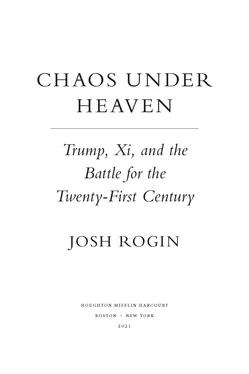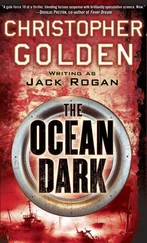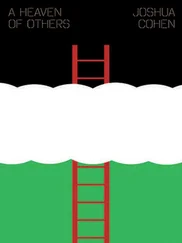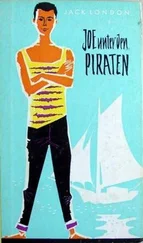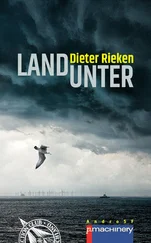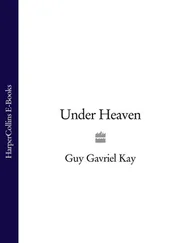Fatefully, Thornton also had recommended that Trump invite Xi to Mar-a-Lago and just focus on their personal friendship at the summit. Trump turned to Bannon and said, “I like this idea, let’s do this.”
Thornton subsequently had gone to Beijing, where in January he met with Xi and Wang. He relayed this same message to the Chinese leaders, telling them that Trump wanted to develop a close, personal friendship with Xi and use that as the primary means of managing the US-China relationship toward the goal of a strategic partnership.
Thornton believed he had Trump’s agreement to use this concept as a guide for how the relationship should be managed. Did he really? Yes and no. Trump often agreed to things in meetings but never followed through. Trump did invest time in building his “friendship” with Xi, and that had various implications down the line. But did Trump really buy into the Thornton’s idea of a “strategic partnership”? Not really.
Thornton’s interventions sometimes backfired. A few days before the Mar-a-Lago summit, Thornton had met with Trump at the White House and then flown to Beijing, where Chinese leaders had asked him to negotiate language for a joint statement that would symbolize the spirit of cooperation between the United States and China. Thornton passed their suggested language for the joint statement to Bannon and Kushner, to get Trump to sign off. But when the State Department and National Security Council officials who were supposed to be in charge of that process finally saw it, they stopped the Chinese wording from becoming the joint statement language. With expectations now too far apart to bridge, the entire effort to agree on a joint statement failed and none was issued. Beijing had tried to use Thornton to cut out the rest of the US government, but this time it didn’t work.
Regardless, Thornton had opened a sanctioned secret channel directly between Trump and Kushner on the one hand and Xi and Wang on the other. After Bannon got fired in August 2017, Thornton and Kushner continued to consult closely. Kushner would sometimes take messages from US Trade Representative Robert Lighthizer and pass them to Chinese leaders through Thornton. The official channels included too many people to be leakproof. Both sides would call on Thornton to use that channel to relay messages or fix problems over the years. In September 2017, after Bannon left the White House, Thornton organized a meeting between him and Wang Qishan in Beijing. All three of them got along famously.
Time’s Up
The months following the Mar-a-Lago summit saw many occasions for Trump’s billionaire buddies to flex their muscles—but they didn’t see much in the way of progress on the trade talks. By the time the one-hundred-day timeframe for negotiations expired in July, no meaningful resolutions had been made.
Ross and Mnuchin had failed. And Trump had become convinced that unless he first imposed real economic pain—not just the threat of pain—Beijing would never make real concessions.
The irony was, if Chinese leaders had just given Ross and Mnuchin something a little more concrete, Trump probably would have accepted it and declared victory. Beijing seems not to have understood that they’d had a chance to take the wind out of the hawks’ sails. Otherwise, they never would have squandered the opportunity.
“China didn’t give us anything during the one-hundred-day plan. They had made so many promises they didn’t deliver on,” a senior White House official said. “They’re so arrogant, they didn’t even bother.”
4
The Road to War
By the end of the summer of 2017, the afterglow of the Mar-a-Lago summit had faded. There was no trade deal in the offing, which meant that the Trump team faced another fork in the road. Would they move forward with the legal and policy preparations that would be necessary to escalate the trade conflict and put real pressure on Beijing? Or would they once again delay real pressure in exchange for more negotiations and more promises?
A trade war was the very thing that Steven Mnuchin and Gary Cohn had been fighting to avoid—but preparing for a trade war didn’t necessarily mean launching a trade war. Some officials who wanted to avoid outright confrontation hoped that the preparations themselves would convince Beijing to take Trump’s demands more seriously. The hawks, meanwhile, were using their time to prepare for the day Trump realized he was again being strung along, by building the evidentiary case for the tariffs. It was a day they were betting would come sooner rather than later.
When the one hundred days of trade talks had failed, Trump convened his top team in the Oval Office and told them he wanted to move forward with a tougher approach. The president no longer believed there was a good reason to delay moving forward with the tariffs.
The most significant step the administration could take toward ratcheting up the pressure on Beijing—a move that would open up a range of options for tariffs and other punitive measures—was to initiate the investigation of China’s economic aggression under Section 301 of the Trade Act. This was one of the legal weapons that Trump had first talked about in Monessen, Pennsylvania, during his June 2016 campaign speech there. Under the law, if a 301 investigation proved to the president’s satisfaction that punitive action (such as tariffs) was needed to protect the US economy, he could act unilaterally—no Congress, no negotiation, no problem.
Because these remarks had come from Trump, the Washington intelligentsia had freaked out during the campaign, as if no previous US administration had gone down this road. But tariffs had been used on China before. For instance, Obama placed 450 percent antidumping counterduties on Chinese rolled steel in the summer of 2016. That’s akin to a tariff. He also put 150 percent antidumping counterduties on Chinese aluminum in December 2016—in essence, another tariff.
Cohn and Mnuchin, along with retired Marine four-star general John Kelly (who had by now replaced Reince Priebus as chief of staff) and others in Trump’s inner circle, began a desperate effort to try to stop the tariffs from moving forward. Mnuchin and Cohn wanted to use the threat of tariffs as leverage to extract a deal from China. But the trade hawks warned that the threat on its own would only cause Beijing to concede just enough to avoid the tariffs. The first Bush administration used the threat of a 301 investigation to drive the Chinese to the negotiating table on the issue of intellectual property theft, which resulted in a memorandum of understanding that never got implemented by Beijing and was never enforced by Washington. That was 1991; in 2017, America was still dealing with the same problem.
If tariffs had any chance of working, the hawks believed, the United States had to impose costs on China first. They believed any negotiations were futile until the 301 investigation was completed and the tariffs were imposed. Then, the negotiations could be framed as a discussion about what China had to do to earn the right to have the costs lifted. The economic pain of the tariffs, felt by both sides but more so by China, would put Beijing under time pressure because China’s economic pain would mount the longer it stalled. Without real pressure, on the other hand, time would always be on Beijing’s side.
Hurry Up and Wait
Even the announcement of the 301 investigation on August 18 got caught up in internal factional infighting and the dysfunction caused by competing officials pushing competing priorities. Steve Bannon planned a big show, but Kelly canceled it because he feared antagonizing Beijing. Bannon had invited a bunch of CEOs whose companies had been victims of Chinese economic mischief to hold a news conference celebrating the investigation’s commencement. The star of the show was to be Safra Catz, CEO of Oracle, whom Bannon had been pushing for several senior jobs, including director of national intelligence and national security adviser.
Читать дальше
